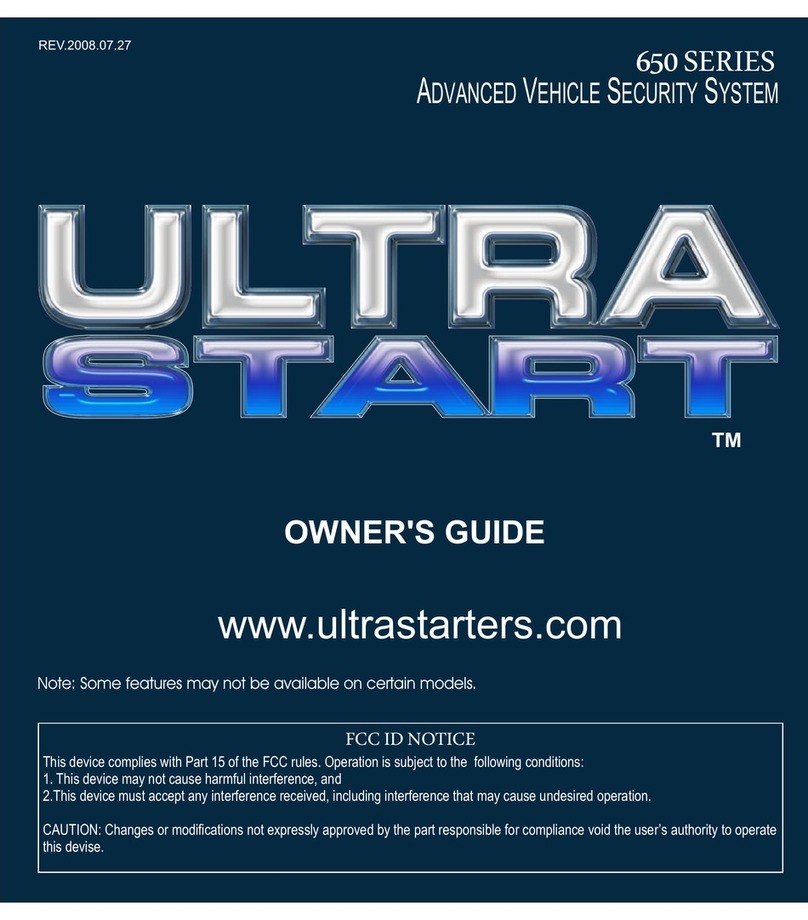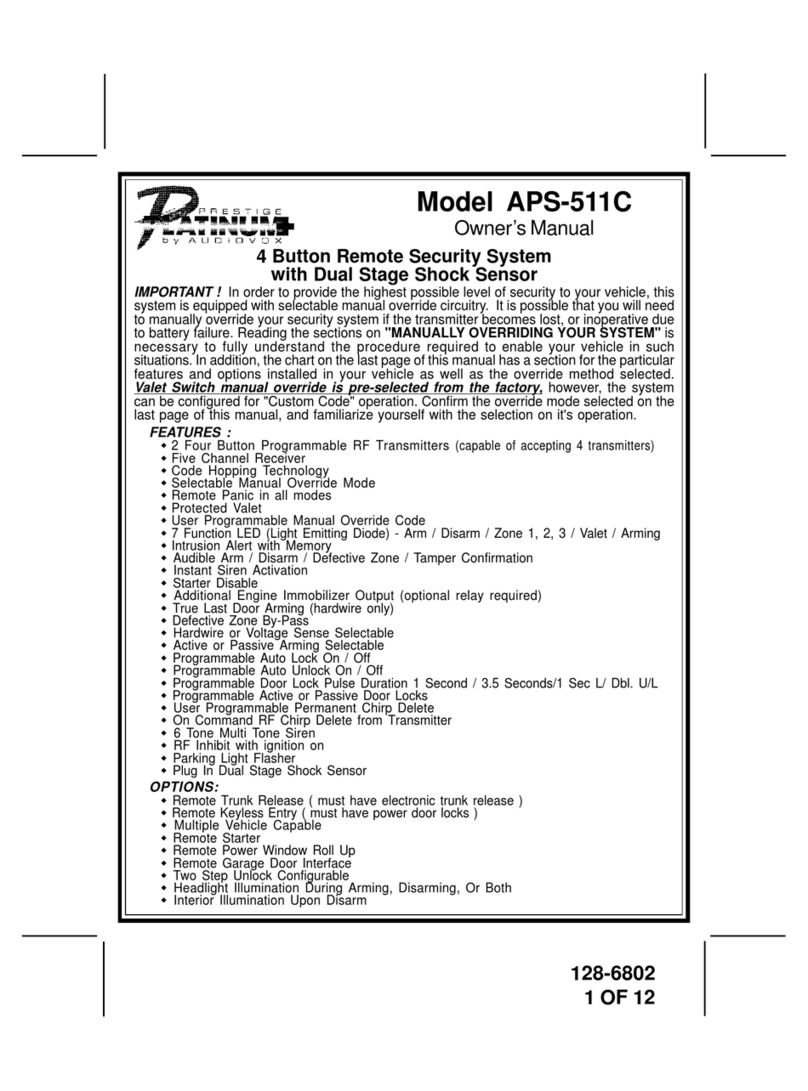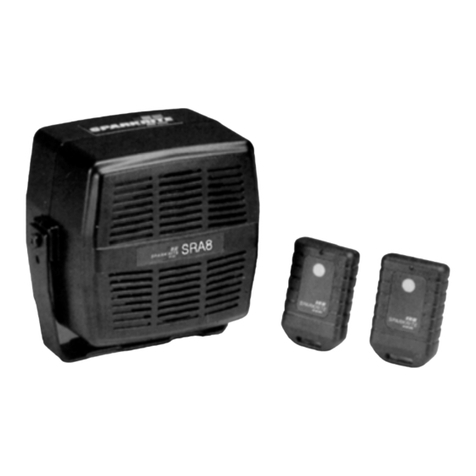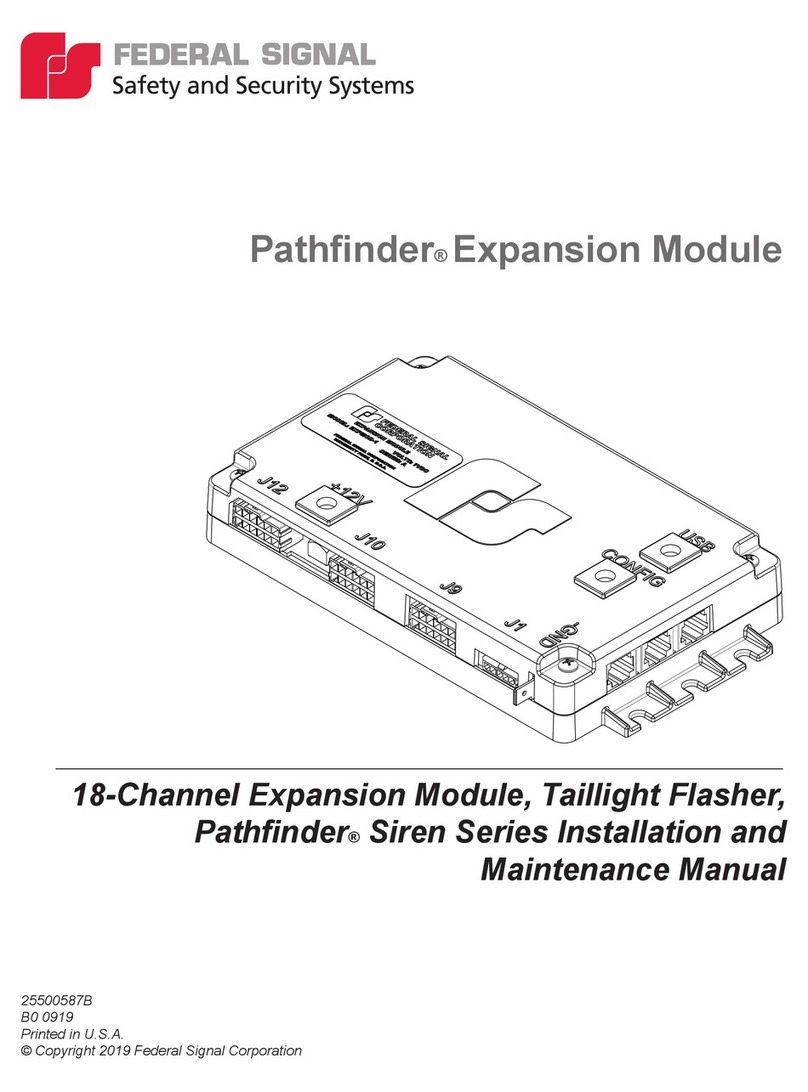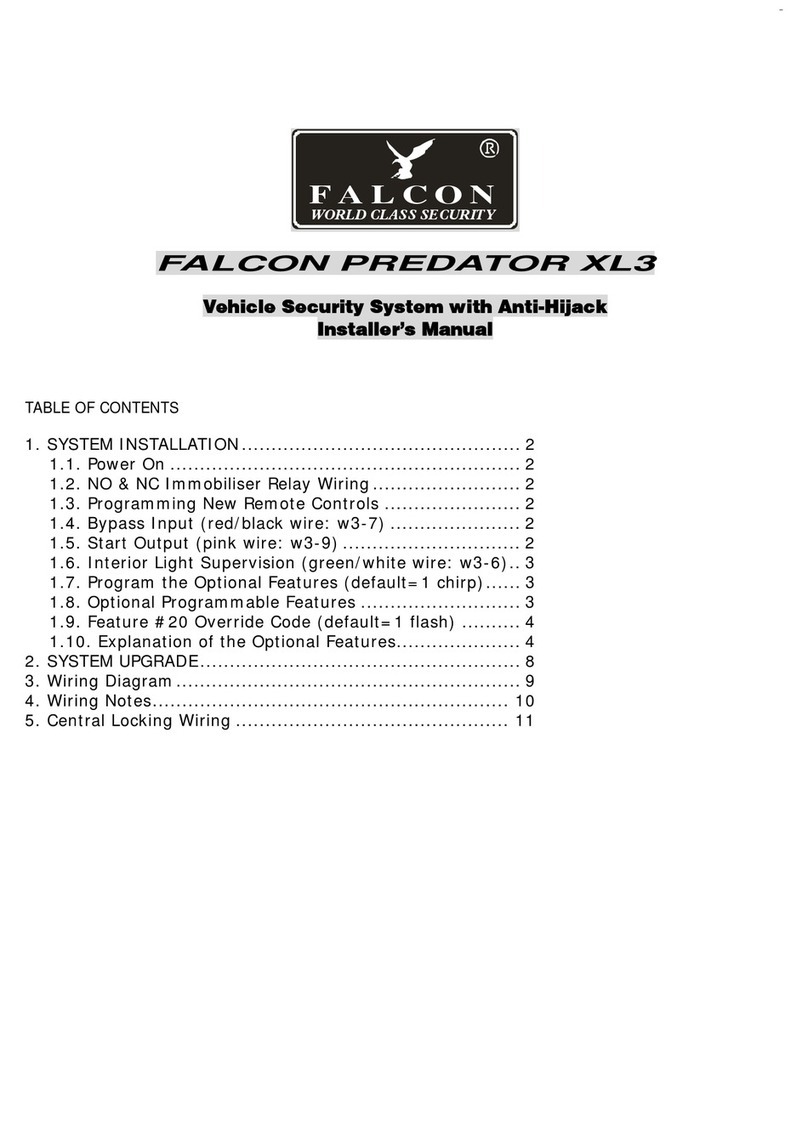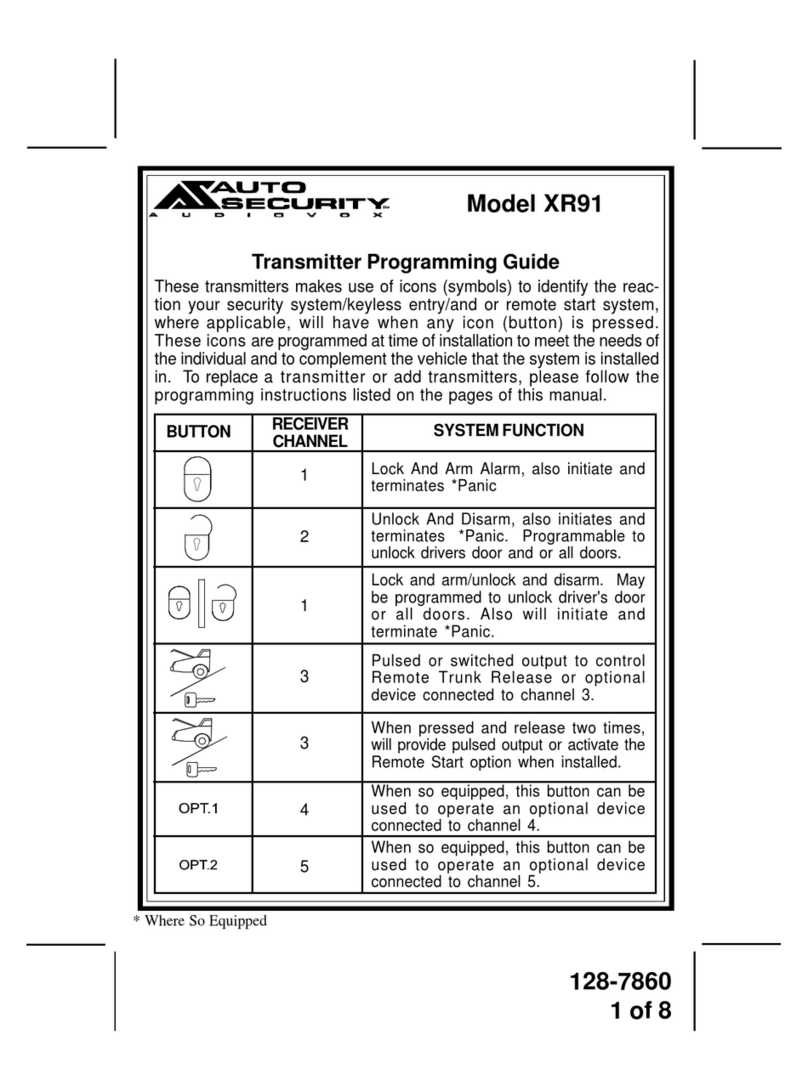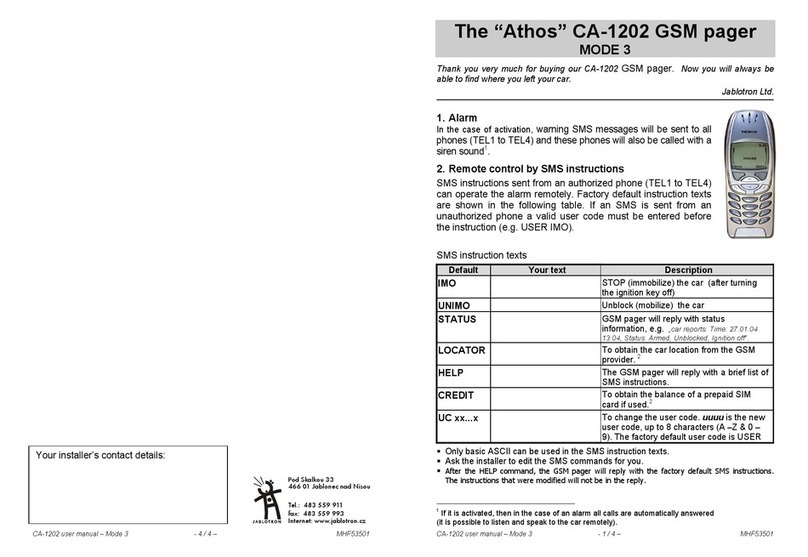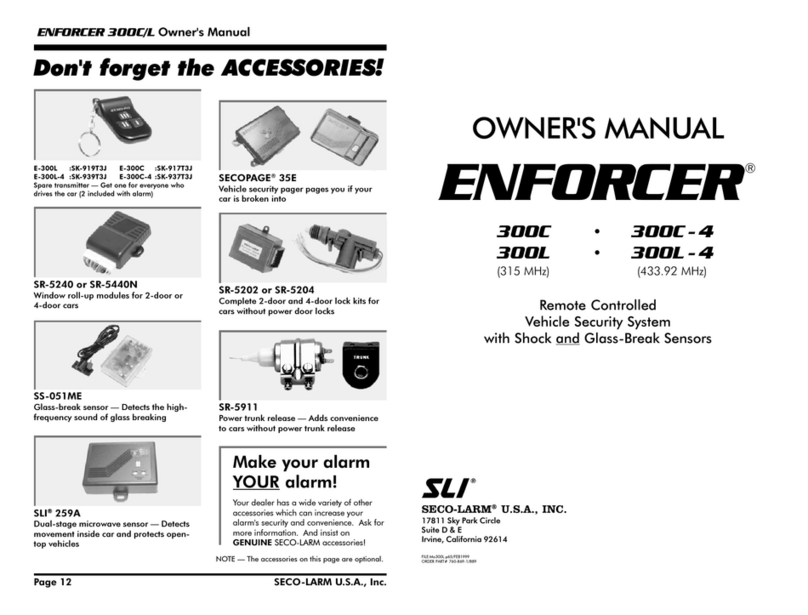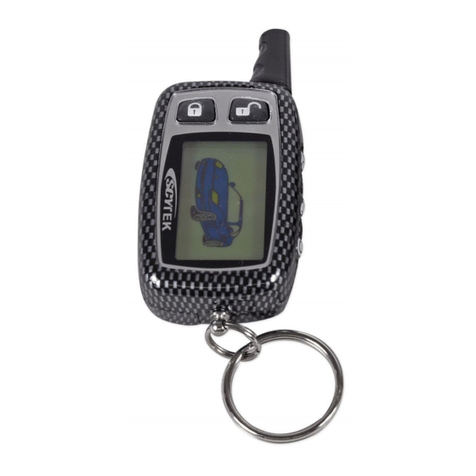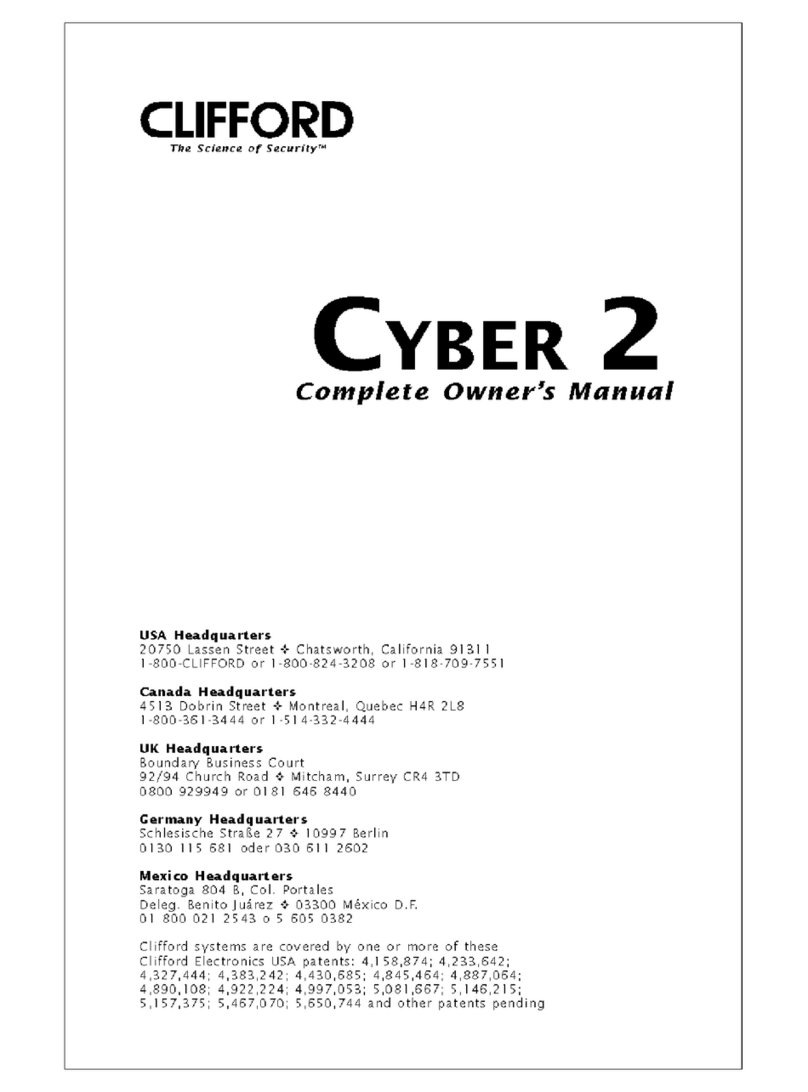
Ungo ProSecurity
Programmable Override Sequence
ProSecurity systems can be programmed to respond
to one to five pulses of theValet/Override switch to
disarm the system.
Progressive Door Unlock
For added security, the ProSecurity system can be
configured to unlock the driver’s door only, leaving the
remaining doors locked. Pressing the UNLOCK button
an additional time will unlock the remaining doors.
This option may require additional parts and labor.
ProSecurity Power Up
The ProSecurity systems will store its current state of
non-volatile memory. If the power is lost and then
reconnected the system will recall the stored state
from memory. This means if the unit is in Valet mode
and the battery is disconnected for any reason, when
the battery is reconnected the unit will still be in Valet
mode.
ProSecurity Starter Disable
An automatic switch controlled by your system that
prevents the vehicle’s starter from cranking whenever
the system is armed. The vehicle is never prevented
from cranking when the system is disarmed, in Valet
mode, or if the starter interrupt switch itself fails.
Rear Defroster Activation
During remote start operation, the rear defroster can
be activated. This option may require additional parts
and labor.
REV (Remote EnabledValet)
REV allows access to entering and exiting Valet mode
without having to disclose the location of the
Valet/Override button. The security systems will not
arm, even with the remote, but all convenience func-
tions (door locks, trunk release, etc.) will still continue
to work normally.
Remote Panic
If you are threatened in or near your vehicle, you can
attract attention by triggering the system with your
remote control. Just press and “PANIC” or “LOCK”
button for two seconds, and you’ll enter the panic
mode. The siren will sound and the parking lights will
flash for the programmed duration or until “PANIC” or
“LOCK” button is pressed again.
Remote Silent Arm/Disarm Capability
The siren chirps upon Arm or Disarm can be temporar-
ily eliminated for that one operation only. The
Arm/Disarm chirps can be turned off permanently, if
desired by entering the programming mode or using a
ProSecurity Programmer. The sire chirps will also be
eliminated during the warn-away trigger of the dual
stage impact sensor.
Selectable Ignition Controlled Door Locks
When the ignition is turned ON, the doors will lock within
3 seconds and unlock when the ignition is turned OFF.
Ignition controlled lock and unlock are independent
features and can be programmed separately
Selectable Siren Duration andTones
The duration of the siren can be programmed to either 30
or 90 seconds. Some states have laws regulating how
long a security system can sound. The multi-tone sirens
included with ProSecurity systems can be easily modified
to select desired tones or single tone.
Short RunTimer /TurboTimer Mode
Short Run Timer /Turbo Timer mode keeps the engine
running after arriving at your destination for a
programmed period of time allowing the engine lubricants
to circuit before shutting down the engine.
Intelli-Tach RPM Detection
Intelli-Tach gives the installer the performance of a hard
wired tach wire, with the convenience of voltage sensing.
It’s far superior to any voltage sensing feature you’ve
tried before.
Intelli-Tach monitors the cranking voltage of the vehicle
using a very fast micro controller and an analog-to-digital
converter. The microprocessor “saves” the base voltage
as a reference. When Intelli-Tach “sees” the slightest
uptick in voltage indicating that the alternator is charging
the battery, the starter motor shuts off instantly.
Tachometer orVoltage Sensing
ProSecurity remote start systems either use a tachom-
eter signal or sense the voltage of the vehicle during
remote start activation. These signals inform the remote
start system that the vehicle has successfully started and
is running.
Trunk/Hatch Release Output
The system’s auxiliary output can be programmed to
operate a factory power release for the vehicle’s
trunk/hatch. If the factory release is not power activated,
an optional trunk release solenoid can often be added.
This output will then disable/ignore the dual stage impact
sensor as you load or unload the vehicle.
D2D (Data-to-Data)
The RK20 and SR7000 have the ability to interface with
XK modules through the D2D port. The advantage of
using D2D interface is that there is less wiring involved in
the installation. Check the XK module installation guide
to determine which wires are not needed and which
options are available.
126
